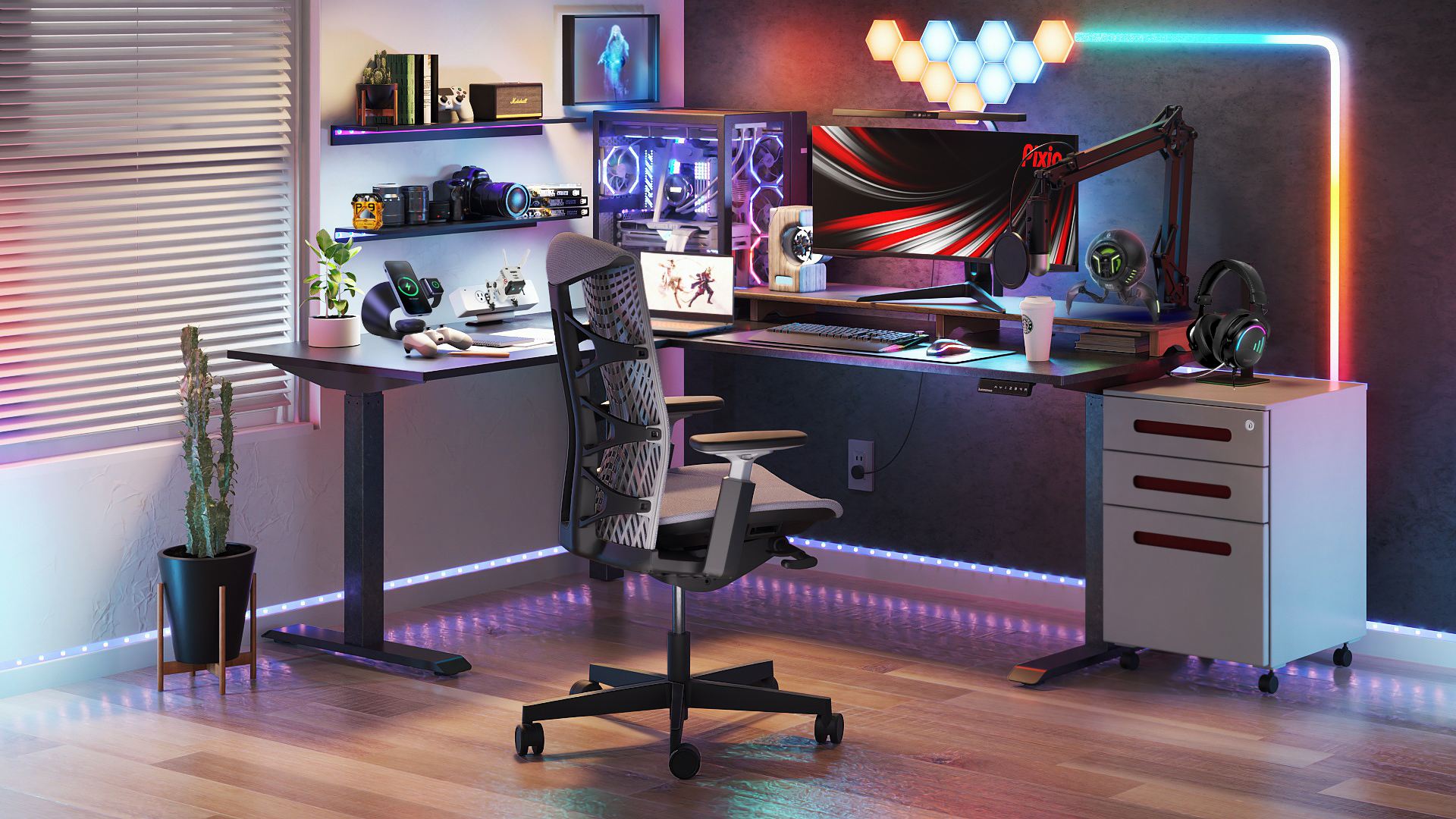
How to Build a PC for Music Production and Create a Productive Setup
Table of Contents
When it comes to music production, your PC is the heart of your creative process. Unlike gaming or general-purpose computers, music production demands specific hardware to handle Digital Audio Workstations (DAWs), plugins, virtual instruments, and large audio files without lag. Building your own PC for music production ensures that you get the best performance tailored to your workflow. Plus, it often saves money compared to pre-built options.
In this guide, we'll walk you through how to build a PC for music production based on different budget levels. Whether you're just starting out, growing as a producer, or need a professional-grade setup, we've got you covered. We'll also share tips on optimizing your workspace to create a comfortable and productive environment.
If you're looking to improve your setup even further, you might find these guides helpful: explore how to make your PC quieter for a noise-free recording environment, learn about setting up a dual PC setup to boost performance, or check out the best PC builds for streaming if you plan to share your music live.
1. Entry-Level Build: Budget-Friendly Setup
For beginners, you don’t need the most powerful hardware right away. This setup will handle basic recording, MIDI programming, and light audio editing without breaking the bank.
| Component | Specification | Description |
|---|---|---|
| CPU | AMD Ryzen 5 5600G / Intel Core i5-12400 | Affordable yet powerful enough for basic DAW tasks. |
| RAM | 8GB DDR4 (upgradeable to 16GB) | 8GB is the minimum, but upgrading to 16GB significantly improves performance. |
| Storage | 256GB SSD + 1TB External HDD | SSDs speed up load times; HDDs are great for additional project file storage. |
| Motherboard | B550 or H610 Chipset | Reliable with enough USB ports for MIDI controllers and audio interfaces. |
| Audio Interface | Focusrite Scarlett Solo | Beginner-friendly interface offering clear, high-quality audio recording. |
| Power Supply (PSU) | 500W 80+ Bronze | Efficient and reliable, providing stable power to your system. |
Performance Expectations: This build will handle simple audio projects with a few tracks and plugins. Perfect for learning the ropes of music production with DAWs like FL Studio, Ableton Live, or Reaper.
Pro Tip: Choose a case with good airflow to prevent overheating, even if you’re not pushing your system hard yet.
2. Mid-Range Build: Balanced Performance
As your projects become more complex, you’ll need a system that can handle more tracks, higher sample rates, and intensive plugins without hiccups.
| Component | Specification | Description |
|---|---|---|
| CPU | AMD Ryzen 7 5800X / Intel Core i7-12700 | Great for multitasking, running large projects, and handling CPU-heavy virtual instruments. |
| RAM | 16GB DDR4 (upgradeable to 32GB) | Ideal for managing complex sessions with multiple plugins and virtual instruments. |
| Storage | 512GB NVMe SSD + 1TB HDD | NVMe SSDs offer faster speeds for loading, with HDDs providing ample space for samples and backups. |
| Motherboard | X570 or Z690 Chipset | Offers superior connectivity, faster data transfer rates, and future-proofing options. |
| Audio Interface | Focusrite Scarlett 2i2 / Universal Audio Volt | Provides better preamps and more input/output options compared to entry-level models. |
| GPU | Integrated Graphics (optional) | Sufficient for music production unless video editing or gaming is required. |
| Power Supply (PSU) | 650W 80+ Gold | Delivers stable power with greater efficiency, making it ideal for future upgrades. |
Performance Expectations: This build is versatile for serious hobbyists and semi-professionals. You can run demanding plugins, large sample libraries, and even dabble in light video editing.
Pro Tip: Consider dual monitors to improve workflow efficiency, especially when juggling DAWs, mixer panels, and plugins simultaneously.
3. High-End Build: Professional Setup
For professional producers and audio engineers, you need a powerhouse that can handle massive projects, real-time effects processing, and even video editing alongside music production.
| Component | Specification | Description |
|---|---|---|
| CPU | AMD Ryzen 9 7950X / Intel Core i9-13900K | Handles the most demanding tasks, including high-track-count sessions and real-time audio processing. |
| RAM | 64GB DDR5 | Future-proof and perfect for orchestral arrangements, film scoring, and large sample libraries. |
| Storage | Dual 1TB NVMe SSDs + 4TB HDD | Fast storage ensures quick load times, with ample space for archiving sessions. |
| Motherboard | X670 or Z790 Chipset | Premium boards with advanced connectivity and top-tier components for maximum stability. |
| Audio Interface | Universal Audio Apollo Twin X | Offers top-tier AD/DA conversion and onboard DSP processing for real-time plugin performance. |
| GPU | NVIDIA RTX 4070 (optional for video editing) | Ideal for video editing, graphics-heavy plugins, or multitasking with visual applications. |
| Power Supply (PSU) | 850W 80+ Platinum | High-efficiency power delivery for demanding components and professional-grade stability. |
Performance Expectations: This setup will breeze through the most complex projects, including film scores, orchestral compositions, and professional studio sessions. It’s also capable of handling high-end video editing and gaming if that’s part of your workflow.
Pro Tip: Invest in professional-grade studio monitors and consider acoustic treatment for your workspace to complement the power of your system.
4. Optimizing Your PC and Workspace for Music Production
Optimizing your PC and workspace is just as crucial as having powerful hardware. A well-configured system ensures smooth performance, while an ergonomic setup boosts productivity and reduces physical strain during long sessions.
4.1. PC Optimization Tips
Start by fine-tuning your PC’s settings to reduce latency and improve efficiency. Adjust your DAW’s buffer size—lower settings reduce latency but require more CPU power, while higher settings are better for mixing with many plugins. Disable unnecessary background apps and services that consume CPU and RAM. Regularly update your operating system, DAW, and drivers to maintain compatibility and stability. If you're using Windows, set your PC to “High Performance” mode in the power settings to prevent throttling.
Using an SSD for your operating system and DAW significantly improves load times. Keep your project files organized and stored on separate drives to avoid bottlenecks. Additionally, manage your plugins wisely; having too many open simultaneously can drain resources, so freeze or bounce tracks when needed.
If you're exploring budget-friendly options, you might find these resources helpful: check out this guide on how to build a gaming PC under $500, explore the best PC build under $1000, or even learn how to create a gaming PC for just $300. Curious about expenses? Discover how much it really costs to build a PC to plan your budget effectively.
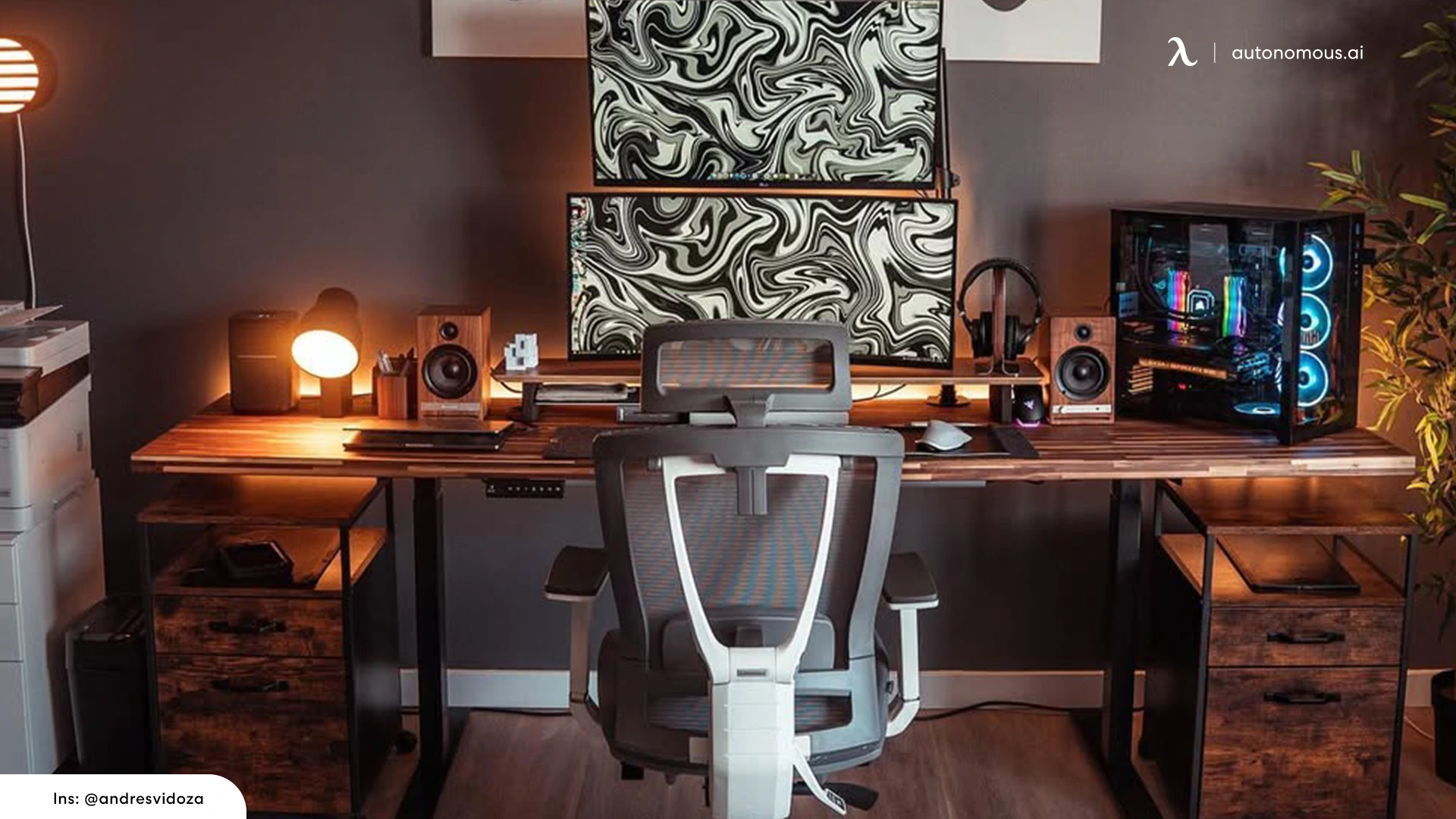
4.2. Ergonomic Workspace Setup
An optimized workspace minimizes fatigue, enhances focus, and improves workflow efficiency. Here's how to create a space that's both comfortable and functional:
A height-adjustable desk allows you to switch between sitting and standing, promoting better posture and reducing fatigue during long sessions. Check out these standing desks for ergonomic flexibility. Invest in an ergonomic chair that supports proper lumbar alignment, reduces back strain, and improves comfort over extended periods.
Use adjustable monitor arms to position screens at eye level, reducing neck and eye strain, especially when using dual monitors. For optimal display setups, consider a dual monitor stand and high-quality monitors.
Add wrist rests to reduce strain when typing, keyboard trays for ergonomic positioning, and anti-fatigue mats if you prefer standing. Consider a stool or drafting chair for alternative seating options.
Improve lighting with a desk lamp and keep your setup organized using effective cable management solutions. A CPU mount helps save space and protect your hardware.
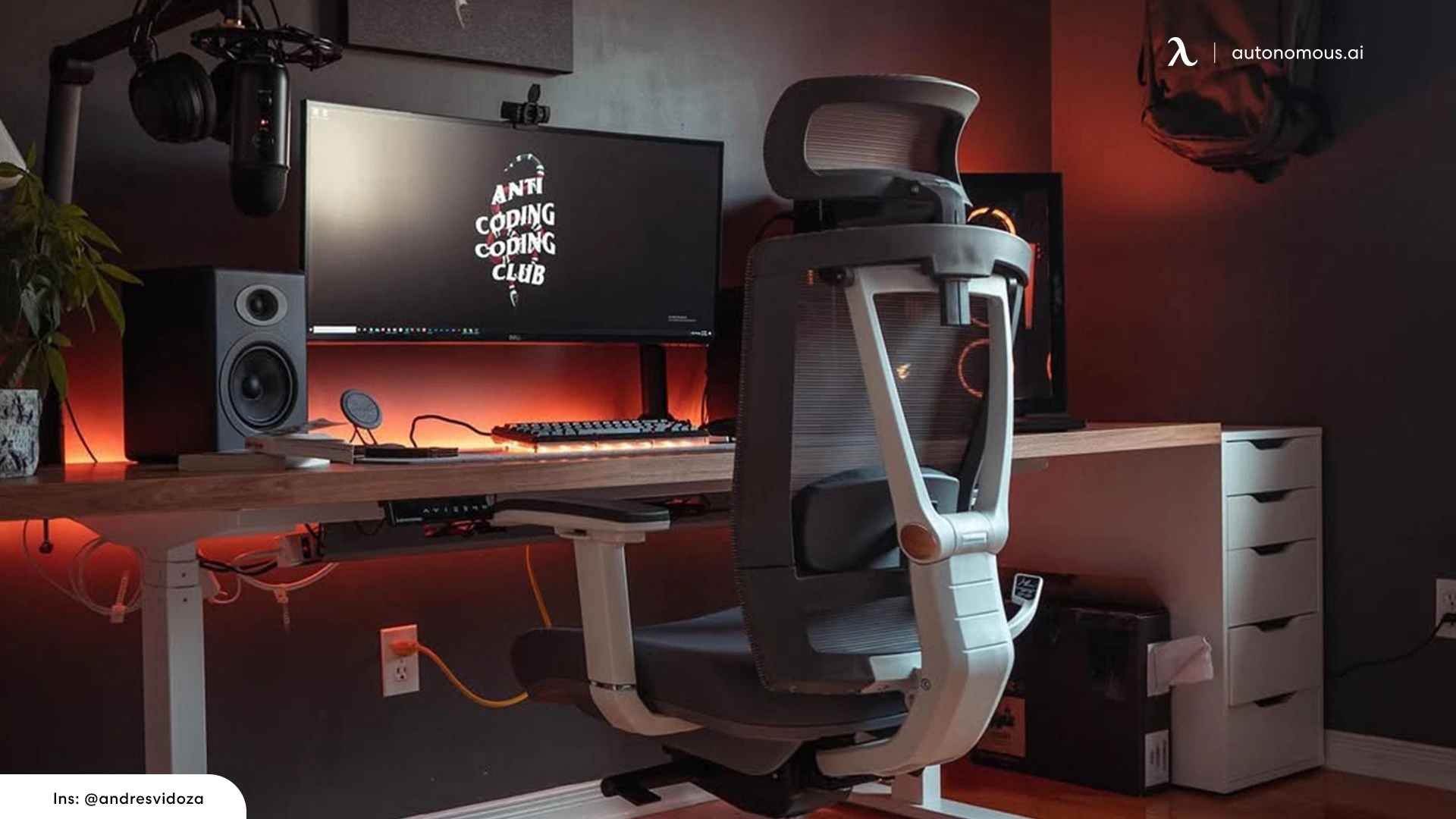
4.3. Essential Accessories for Music Production
Studio Monitors: High-quality monitors provide accurate sound reproduction, essential for mixing and mastering. Pair your setup with ergonomic monitor placements.
Professional Headphones: Whether recording with closed-back headphones or mixing with open-back models, explore premium headphones for the best audio clarity.
MIDI Controller: MIDI keyboards or controllers offer hands-on control over virtual instruments and DAW parameters, enhancing workflow efficiency.
Audio Interface: Interfaces improve sound quality and reduce latency, which is crucial for recording vocals and instruments. High-end microphones complement your audio interface for clear recordings.
External Storage: Use SSDs or HDDs for backing up projects. Learn more about optimizing performance with SSD and RAM comparisons.
Acoustic Treatment: Add acoustic panels, bass traps, and diffusers to control reflections, creating a balanced listening environment.
USB Hub and Cable Management: A powered USB hub ensures seamless device connectivity, while effective cable management keeps your workspace organized.
For those comparing graphics options for both music and visual production, see NVIDIA vs. AMD: Which is Better to find the right fit for your setup.
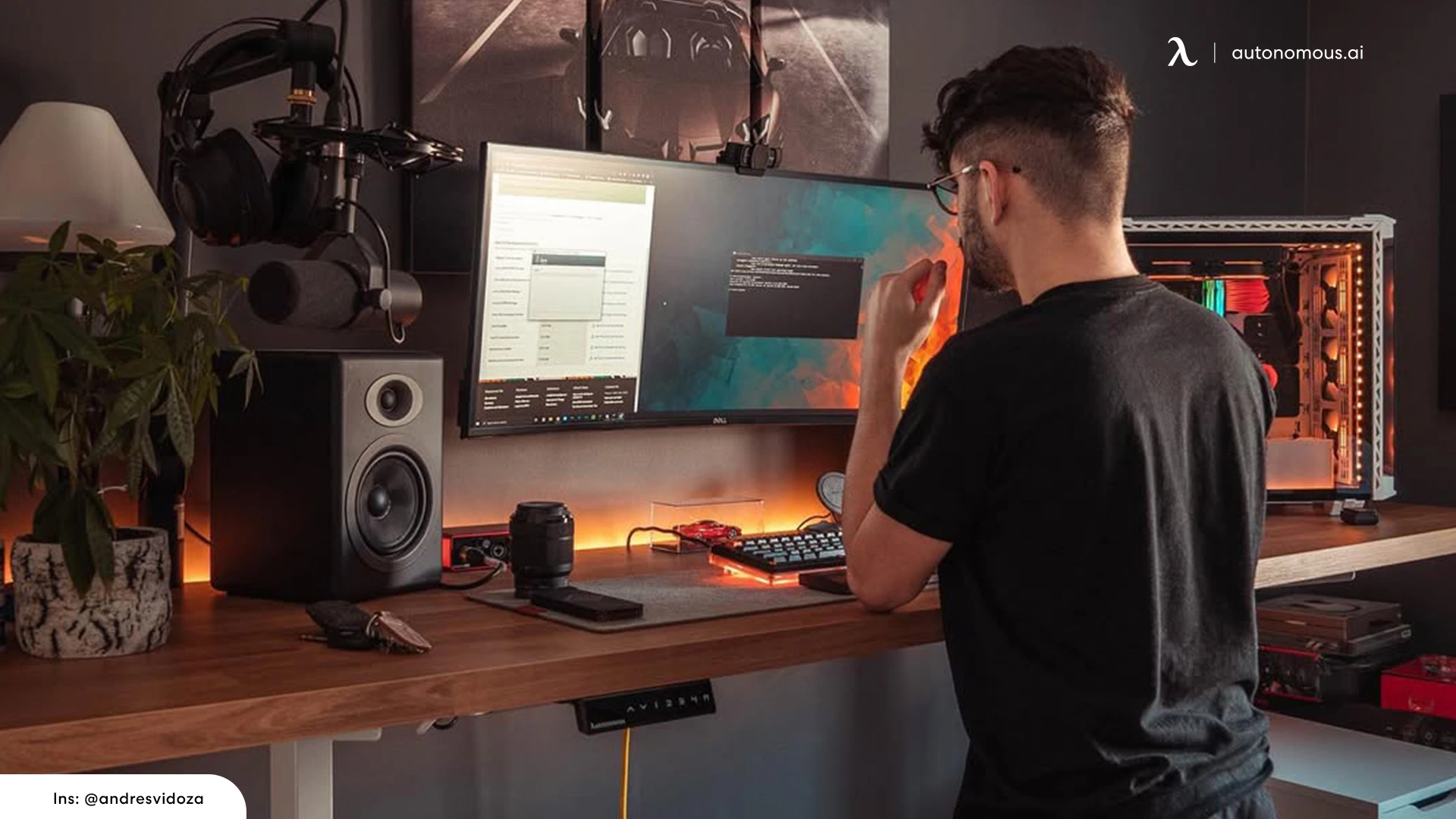
5. Common Mistakes to Avoid
Building a PC for music production offers flexibility and performance, but it’s easy to make mistakes that can affect your workflow. Here are some common pitfalls to avoid:
- Prioritizing GPU Over CPU:
Unlike gaming PCs, music production relies heavily on CPU performance, not the GPU. Investing in a high-end graphics card while neglecting the CPU can bottleneck your system, especially when running multiple plugins and virtual instruments.
- Underestimating RAM Requirements:
Many beginners think 8GB of RAM is enough for all tasks. While it’s okay for light projects, 16GB or more is recommended for smooth performance, especially when using large sample libraries.
- Choosing the Wrong Storage Setup:
Relying solely on a traditional HDD slows down boot times and DAW performance. Always opt for an SSD for your operating system and active projects, with an additional HDD for long-term storage.
- Skimping on the Power Supply (PSU):
A cheap PSU can cause system instability or even damage components. Choose a reliable, 80+ certified PSU to ensure consistent power delivery.
- Poor Cooling and Airflow:
Music production can push your CPU to its limits. Inadequate cooling can lead to thermal throttling, reducing performance. Invest in a good CPU cooler and ensure proper case airflow.
- Ignoring Audio Interface Compatibility:
Not all motherboards handle external audio interfaces well. Ensure your audio interface is compatible with your PC’s chipset and drivers to avoid latency issues.
- Failing to Plan for Future Upgrades:
Building a PC with no room for upgrades can limit you as your projects grow. Choose a motherboard that supports RAM expansion, additional drives, and future CPU upgrades.
Avoiding these mistakes will save you time, money, and frustration, ensuring your music production PC runs efficiently for years to come.
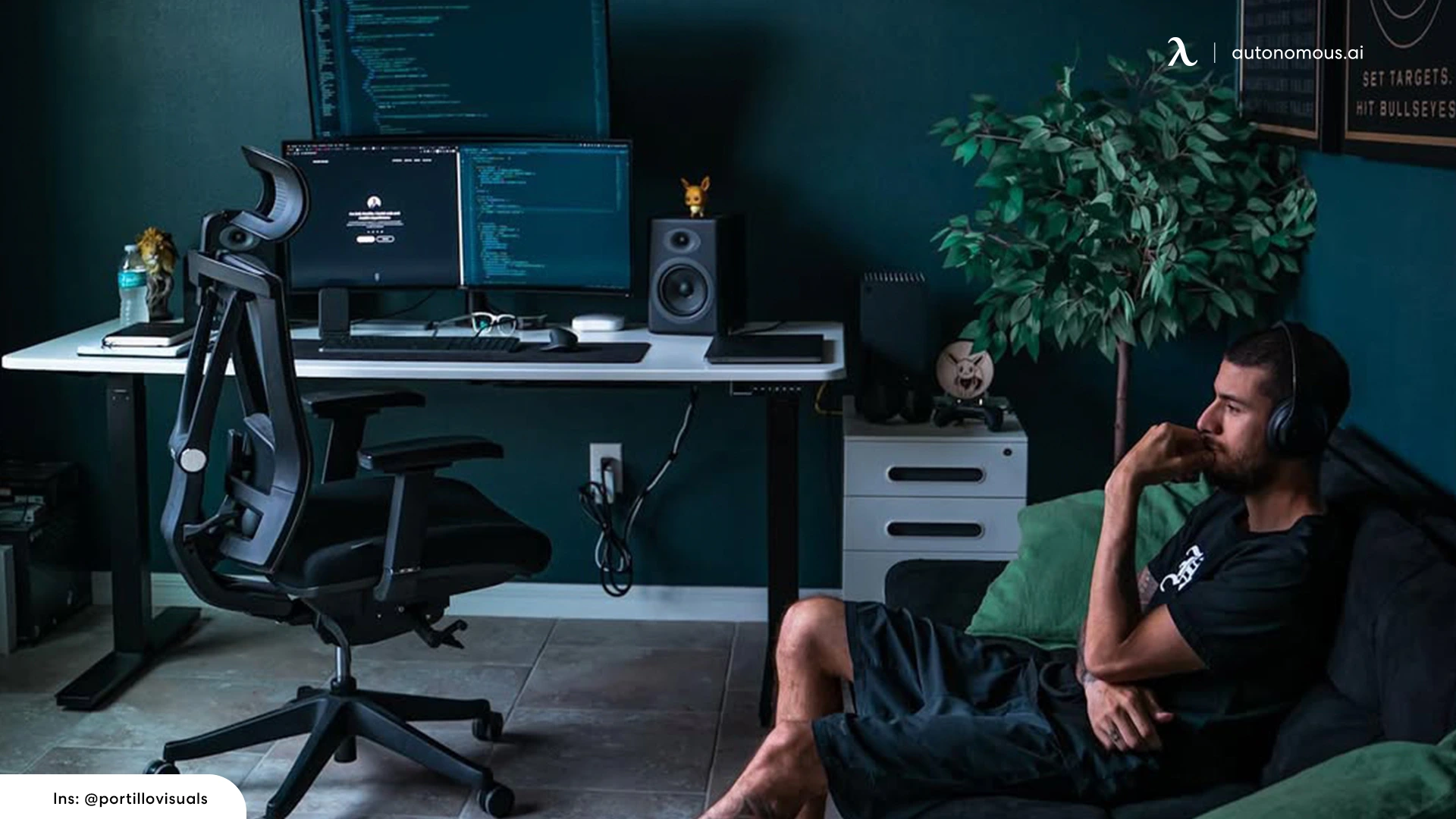
6. FAQs
Can I use a gaming PC for music production?
Yes, but with caution. Gaming PCs often prioritize GPU performance, while music production relies heavily on CPU power, RAM, and fast storage. You may need to tweak settings to optimize for audio tasks.
How much RAM do I really need for music production?
8GB is the minimum for beginners. 16GB is ideal for most producers, while 32GB+ is recommended for large projects, heavy sample libraries, or professional-grade work.
Is SSD or HDD better for music production?
SSDs are faster and ideal for your OS, DAW, and active projects. HDDs are cheaper and good for archiving large files. A combination of both is often the best setup.
Do I need a dedicated graphics card for music production?
Not necessarily. Integrated graphics are sufficient unless you also do video editing or 3D rendering. High-end builds may include a GPU for multitasking with visual applications.
What’s the best CPU for music production?
CPUs with high single-core performance and multiple cores are ideal. AMD Ryzen 7/9 and Intel i7/i9 processors are excellent choices, depending on your budget. More cores help with multitasking and processing demanding plugins.
How can I reduce audio latency on my PC?
Lower the buffer size in your DAW settings, use an ASIO audio driver, and optimize your PC by disabling unnecessary background applications. Ensure your audio interface drivers are up to date for the best performance.
Is it better to build my own PC or buy a prebuilt one for music production?
Building your own PC allows for customization, better performance for the price, and easier upgrades. However, prebuilt PCs offer convenience and are ready to use out of the box. If you're comfortable with assembling components, building your own is often the better choice.
Does my audio interface affect CPU performance?
Indirectly, yes. High-quality audio interfaces with dedicated DSP (Digital Signal Processing) can offload some processing from your CPU, reducing its workload. This is especially helpful when running real-time effects.
How important is cooling in a music production PC?
Very important. Overheating can cause throttling, leading to performance drops and audio glitches. Opt for a case with good airflow, quality fans, and consider liquid cooling for high-end builds to maintain optimal performance.
What DAW should I choose for my PC build?
The choice of DAW depends on your workflow. Popular options include Ableton Live, FL Studio, Cubase, Logic Pro (Mac only), and Reaper. Check the system requirements for your preferred DAW to ensure compatibility with your build.
Conclusion
Building your own PC for music production allows you to tailor performance to your needs while saving money compared to pre-built systems. Whether you’re a beginner, an intermediate producer, or a professional, the right combination of hardware and an optimized workspace will enhance your creativity and productivity.
Don’t overlook the importance of ergonomics. A well-designed studio with a standing desk, ergonomic chair, and tech gadgets can make long sessions more comfortable and help you stay inspired. Invest wisely, build thoughtfully, and let your creativity flow without limits.
Stay connected with us!
Subscribe to our weekly updates to stay in the loop about our latest innovations and community news!
Interested in a Link Placement?
Spread the word
.svg)
.svg)










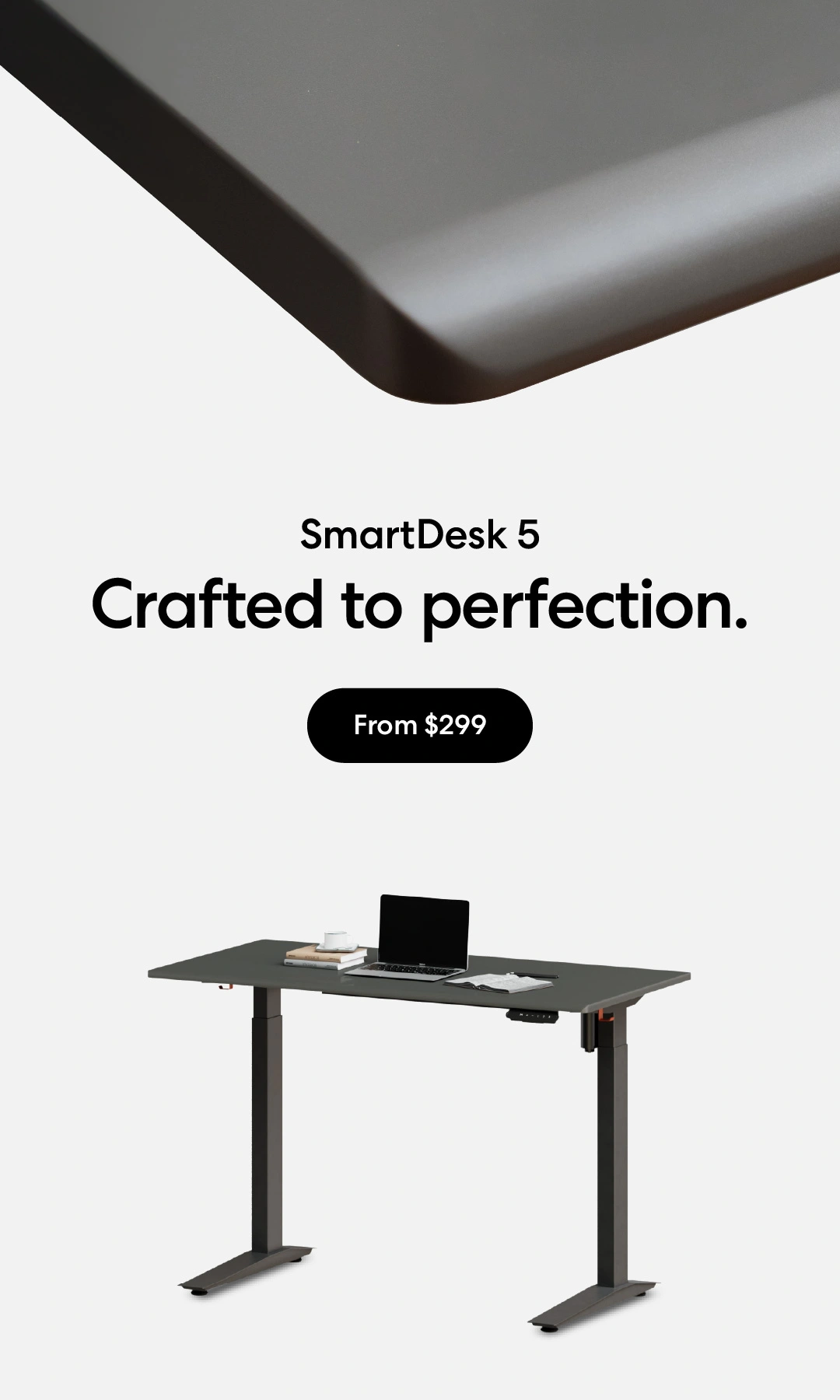
/https://storage.googleapis.com/s3-autonomous-upgrade-3/production/ecm/230914/bulk-order-sep-2023-720x1200-CTA-min.jpg)
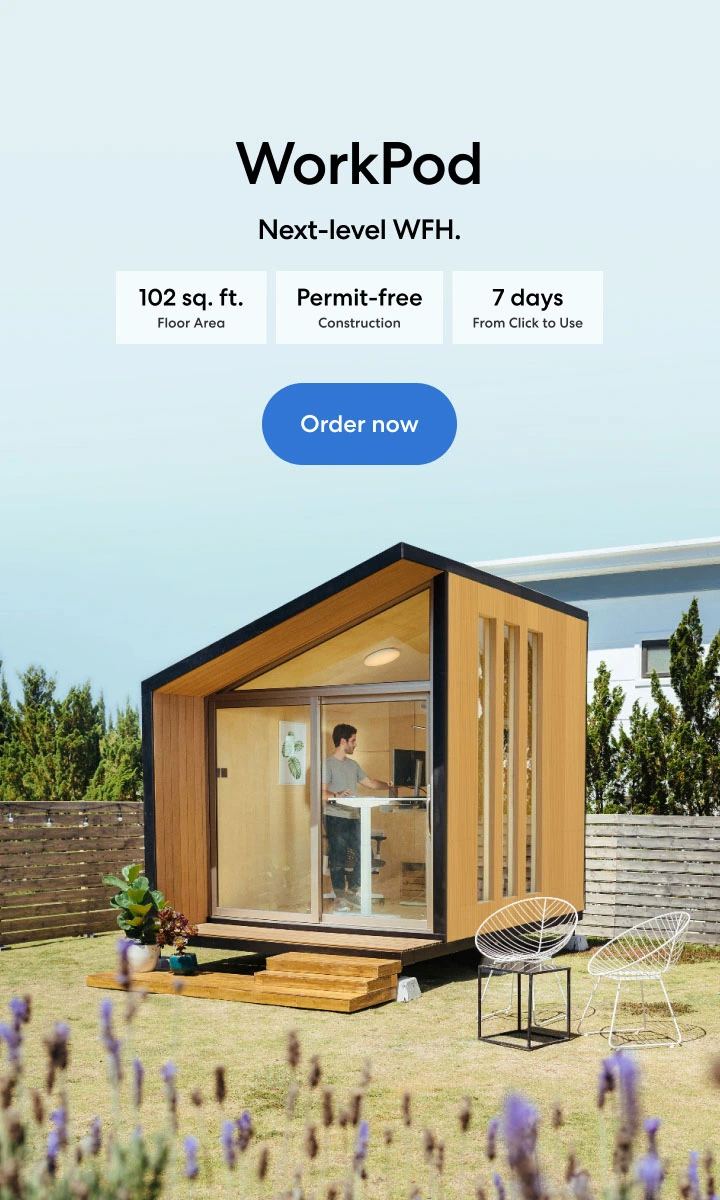
/https://storage.googleapis.com/s3-autonomous-upgrade-3/production/ecm/230824/image_2Qy8RvXi_1692156220697_raw-0545aba5-ec71-4736-8a0d-b290d04efd58.jpg)